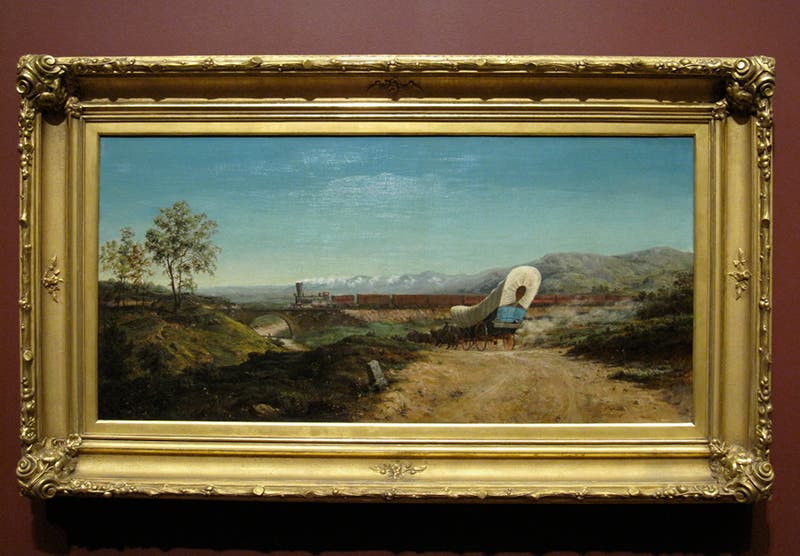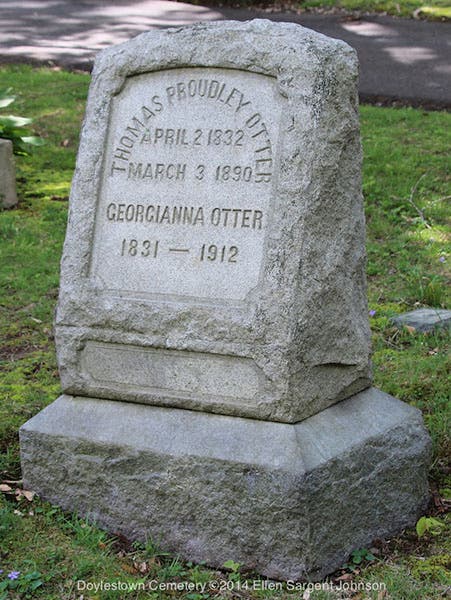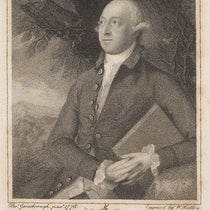Scientist of the Day - Thomas Proudley Otter
Thomas Proudley Otter, an American painter, was born Apr. 2, 1832. Otter is the counterpart in the art world to Norman Greenbaum or the Baha Men in the world of music, a one-hit wonder who is known for a single work of art. In Otter's case, that is a painting called On the Road, completed in 1860. It shows a Conestoga wagon heading off into the distance along a bumpy road, while a steam locomotive and train, the wave of the future, crosses its path. The painting captures, seemingly to everyone's satisfaction, the great technological shift of the 1860s, when the railroad gathered steam and profoundly changed the shape of the American West.
On the Road was included in the Bicentennial exhibition organized by the Smithsonian Institution in 1976, called America as Art, and it was also featured in the more recent and quite engaging exhibition at the Nelson-Atkins Museum of Art, Art in the Age of Steam (2008). On the Road didn’t have to go on the road for the latter exhibition, since its permanent home is in Gallery 215 of the Nelson-Atkins Museum. On their webpage for the exhibition, On the Road is the featured painting.
Otter was trained in Philadelphia and ultimately settled down in Doylestown, just north of Philadelphia. Doylestown is today the site of the Michener Art Museum, founded in 1988 and named after the writer, James A. Michener, who also came from Doylestown. It has an impressive collection of art by Pennsylvanians, including at least one other painting by Otter, The Palisades at Nockmixon (1875; third image). Perhaps this makes Otter a 1.5-hit wonder, or more critically, a 1.1.
Otter died in 1890, at the age of 57, and was buried in the Doylestown Cemetery, where his tombstone can still be viewed. It would take another 70 years for his painting, On the Road, to be recognized as an American classic.
I hadn’t thought of it before, but at the very time that the Nelson-Atkins Museum was organizing an exhibition on steam, the Linda Hall Library was mounting an exhibition on ice, to wit: Ice: A Victorian Romance (2008). We had two of water’s three phases covered here in Kansas City. I hope someone, somewhere, did a concurrent exhibition on the liquid version of water.
William B. Ashworth, Jr., Consultant for the History of Science, Linda Hall Library and Associate Professor emeritus, Department of History, University of Missouri-Kansas City. Comments or corrections are welcome; please direct to ashworthw@umkc.edu.










